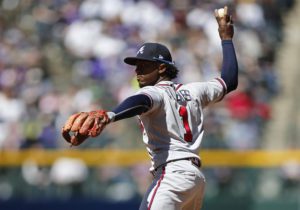2021 Players to Pass On
by Pat Cloghessy
Sometimes, BABS’ ratings seem, well… wrong. Perhaps it’s a player who we rely on for power but BABS is not as optimistic. Or maybe it’s a stolen bases source that BABS is not sold on. Oftentimes, she’s right. In years past, she told us not to count on SBs from Paul Goldschmidt. She even doubted Jose Altuve’s speed. While we expected Anthony Rizzo to be a consistent 30-35 HR hitter, BABS tabbed him with moderate power — more of a 20s guy.
This is not meant to serve as a wet blanket on any player’s profile. It’s more a BABS-style critique of these players’ skills, and especially relative to their acquisition costs.
Take Manny Machado (p,AV) [ADP 22], for example. He’s a perennial 30 HR hitter, but BABS hasn’t cosigned that level of power skill since 2016. Again, he’s wonderful, and likely will be again. Don’t forget, he was a 5th round (lowest since 2014) pick in 2020, producing gargantuan stats in a sprint of a season. Was it really a career resurrection after the market had soured on him? Or was it a great two months? Well, he’s being drafted as if he’s all the way back. And don’t discount how perception tints the picture. Expectations were lowered entering 2020. Machado overachieved. Now Manny gets perceived in a positive light. He is ramping up. And this glowing perception is a departure from the consensus opinion of him just a few months ago. Funny, that.
Ozzie Albies (s,a) [33] appears to be a market outlier. He does have obvious, playable assets. However, all other members of Albies’ (pictured) asset group go off the board almost 100 picks later. This could mean that drafters are underrating the group altogether. The inverse is more likely. BABS has always been skeptical of Ozzie as a real power threat, and you could fall out of bed and land on a 20 HR player these days. For him to earn his draft slot, Albies probably needs to turn on the speed. Twice in his nascent career has he gone well north of 600 AB. His SB totals in those two seasons: 14 and 15. Also, remember this: of the 33 bats drafted in the top 50 ADP, just six are burdened with injury liabilities. Albies is one.
Maybe the most interesting information that pops off the BABS database page has to do with two superstar players. Francisco Lindor (p,s,a) [17] and Nolan Arenado (p,a) [33] both changed teams this offseason. As a result, BABS is projecting depressed assets for each player. Listen, no one is going to get ridiculed for picking Lindor in the second round. But there are valid reasons to be at least a bit skeptical. Lindor is changing leagues, new pitchers to face, and a new city with which to get acclimated. His new ballpark is also a downgrade. All of these factors put a backtrace in statistical output squarely on the table. None of this will wipe the electric smile off of Francisco’s face, but we shouldn’t be surprised if there is an adjustment period.
Arenado has fewer of those issues to deal with. He stays in the same league, and heads to a city that is always welcoming to its ballplayers. The change that matters most is of course the departure from Coors Field. Throughout his career, Nolan has had at least one extreme asset (P+ or A+) on his ledger in every season. BABS’ projections for 2021 are a severe departure from that. Nolan has been a first round pick each of the last four seasons. Drafters are (not surprisingly) pushing him down this year, but the question must be asked: Has the market pushed him down far enough? There are 12 full-time batters with the same assets who are being selected after pick 69. Most of them much, much later than that.
When it comes to starting pitchers, fantasy players have been doing their homework. It’s admittedly difficult to find instances where BABS and the market differ (especially early in the draft).
Lance Lynn (e,k) [54] is a guy whose projected assets are not as strong as those drafted just ahead of him. After Lynn? It’s not a steep drop. Maybe that area of the draft is where the variance between ADP and actual picks should start to widen. At least when it comes to starting pitching. There are many with similar skills who will be around 60 or 70 picks later. We should note here that once Lynn is gone, there are only four or five more full-time starting pitchers remaining who have multiple assets.
Which leads to one of the more compelling questions about this upcoming season. How will starting pitchers, those veritable creatures of habit, deal with the prospects of handling a full workload in 2021? As discussed elsewhere, for years, franchises have shied away from allowing significant IP jumps year-over-year. Most starting pitchers will be facing this conundrum head on. Granted, this tack is often taken early in a pitcher’s career when they are normally on a program that steps up innings in some linear fashion. But this is still uncharted territory.
“Full-time” playing projections are based on historical markers that were interrupted by The Great Interruption. What will the landscape look like in September? Will some of the elite full-timers have had their workload reduced throughout the season in order to save them for a playoff push? Will the mid-timers’ innings totals be, on average, closer to the full-time guys? It’s possible that innings-pitched totals will huddle closer to the mean than they have in the past. Add in the perpetual shift away from “quality starts” and third times through the order, and the picture is even blurrier.

